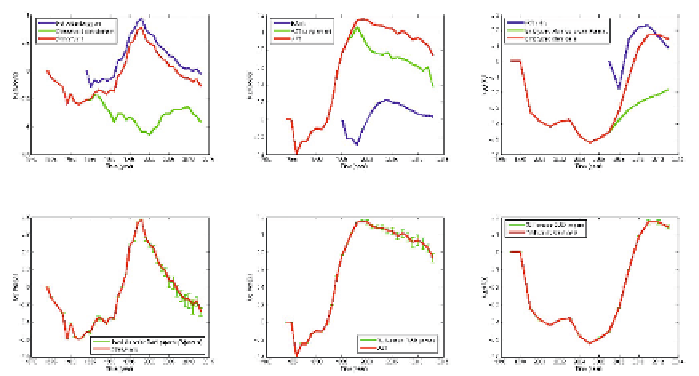Information Technology Reference
In-Depth Information
(a)
(b)
(c)
(d)
(e)
(f)
Fig. 4. Transformative research in the biomedical sciences
. (a) and (d) shows
the case of H. Pylori vs. traditional stress/acid paradigm; (b) and (e) shows the case
of HAART vs. AZT for AIDS therapy; (c) and (f) shows iPS vs. embryonic stem
cells.Notice the split between the red curves and green curves, indicating cascade dis-
ruption.
Figure 4(a) and (d) shows that Marshall and Warran's 1984 papers created
a cascade disruption much wider than 30 related papers published in the same
year. The gap (dropping of the green curve) can be observable as early as 1985,
right after its publication.
To test the specificity of cascade interruption, we randomly selected 30 highly
cited papers published in the same year as each of the transformative research
papers that we selected. These randomly selected papers served as negative
controls. We plot the growth of their cascades and computed the means and
standard deviations of the average cascades of these 30 challengers and the green
curve shows those for their residue cascades, as shown in Figure 4(d). The curves
show that though the growth of their cascades varies widely (blue curve), the
complements of the dominating cascade are hardly disrupted (green curve).
We tested two other renown cases of transformative research in the biomedi-
cal sciences: HAART vs. AZT for the treatment of AIDS and induced pluripo-
tent stem cells (iPS) vs. embryonic stem cells. Zidovudine or azidothymidine
(AZT) [14, 15] is the first approved drug in the U.S. for AIDS therapy. However,
the best AZT can do is to slow down virus replication but never completely cure
the disease until a “cocktail” therapy known as highly active antiretroviral ther-
apy (HAART) was proposed by David D. Ho
et al.
[16]. Research on the stem
cells used to require a technique that derives the stem cells from early-stage em-
bryo [17] and raised ethical concerns.iPS [18, 19] is a breakthrough that allows
for derivation of stem cells without the controversial use of embryos. As shown in







Search WWH ::

Custom Search